#Pedro de Alvarado
Text
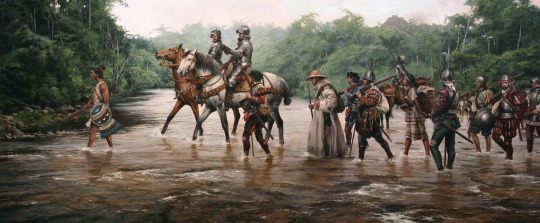
The March to Tenochtitlan by Augusto Ferrer-Dalmau
#hernán cortés#conquistador#art#augusto ferrer dalmau#conquistadors#tenochtitlan#tenochtitlán#mexico#spanish#spain#aztec#aztecs#mexica#mesoamerica#bartolomé de olmedo#pedro de alvarado#americas#history#european#age of discovery#age of exploration#explorer#spanish empire#conquest#aztec empire#expedition#river#friar#knight#priest
83 notes
·
View notes
Text

"The armor, the pikes, the Toledo steel blades, the discipline and know-how from decades of fighting the Moor [...]. And above all, bravery and daring [...]. Once conquests were made, he never stopped".
-BAP on Pedro de Alvarado.
#Pedro de Alvarado#Alvarado#hernan cortes#pizarro#age of exploration#conquistadors#Spaniards#frontier#wild west#conquest#Europeans#Europe#moors#mayans#aztecs#toledo steel#castile#castilians
6 notes
·
View notes
Text
sitting here thinking about how my mom and grandma had to abandon so much of their indigenous/pipil practices for their safety and how they were kicked off their own land and how my mom couldn't learn her native tongue and then years later were ran off by a civil war that was backed by the United States.
#as thanksgiving grows closer i just get fired up about how much of my culture was erased#anyway fuck pedro de alvarado
8 notes
·
View notes
Text
The Water Cycle – Alchemy In America?
─ VERSION OF THE MARGINAL NOTES TO THE THIRD HYMN; to Tlaloc
── “Ahvia mexico teutlaneviloc”.
means:
“In Mexico one borrows from the god.”
── “Amapanitl an nauhcampa ye moquetzquetl”
means:
“Paper flags in the four directions have stood up.”
#The Water Cycle#Alchemy In America#Tlaloc#Coat of arms#Ferdinandi Cortesii#Hyspania#Narratio#Cortés Hernán#López de Gómara Francisco#Nicholas Thomas#historie of the conquest of the VVeast India#new Spayne#Prince Hernando Cortes#marques of the Valley of Huaxacac#The fourth report that Hernando Cortés#Governor and Captain General for His Majesty in the New Spain#Lord Don Carlos Emperor Forever Augustus and King of Spain#letters and reports that the captains Pedro de Alvarado#Diego Godoy#Fourth Relation#Tenuxtitlan#15 October 1524
0 notes
Text
Nadie:
Yo, a mi mejor amigo: ESQUE MIRA, Tezcatlipoca me parece la mejor opcion para que el genere un poco de pedo en mi historia porque tecnicamente esta zona esta manejada por Quetzacoatl. Asique imaginate dice el man "Puta si le ayudo a este cacique, puede que me empiecen a venerar en sus tierras en vez de a ese cerote." y con mucha mas razon el maje se va a emputar con Atlacatl por casarse con una seguidora de Quetzacoatl o Itzqueye--
Mi amigo:
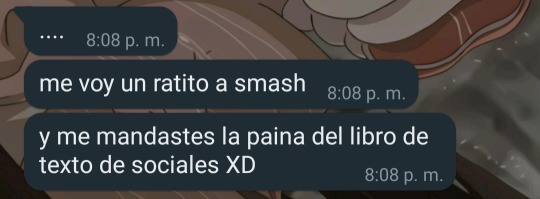
#zagreus rambling#I am not normal about this#les juro que cada vez que voy leyendo e investigando mas sobre la mitologia azteca me voy emocionando mas#me siento como niño chiquito descubriendo mas cosas ultra vergonas#todavia necesito hacer mas investigacion pero lo que llevo ya me va dando mas y mas ideas para squel webcomic#si. el de william y damian. ese#y los que saben quien es atlacatl: Yes. im about to give him the chance tl fight back pedro de alvarado#atunal tambien#ptamadre tengo clase a las 6
0 notes
Text
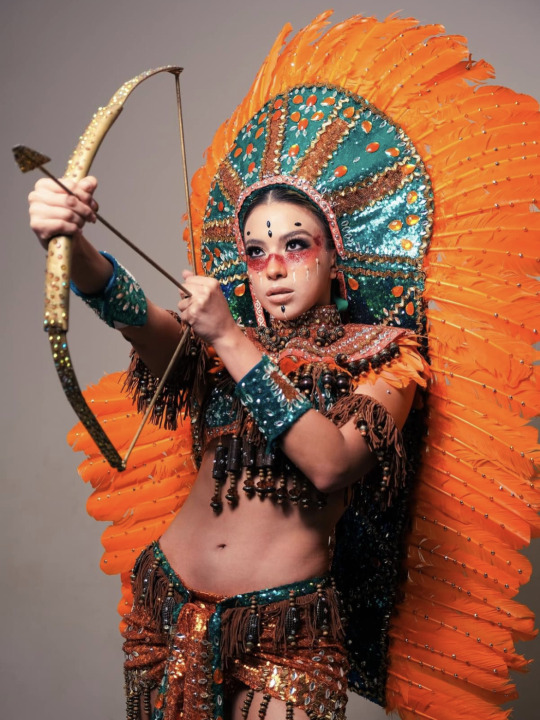

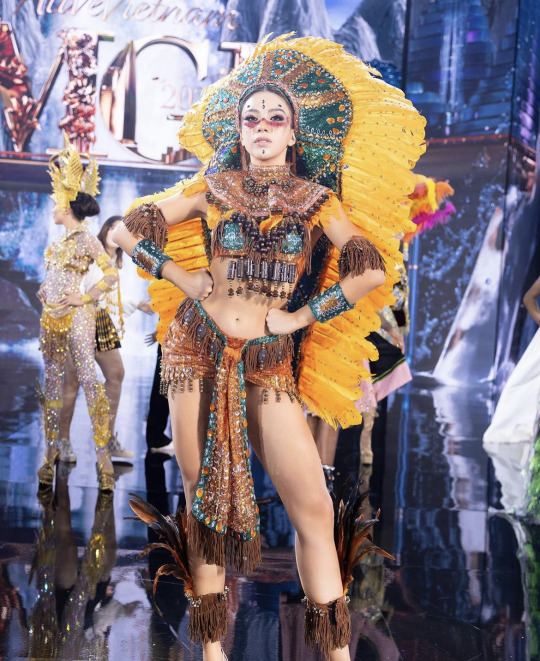


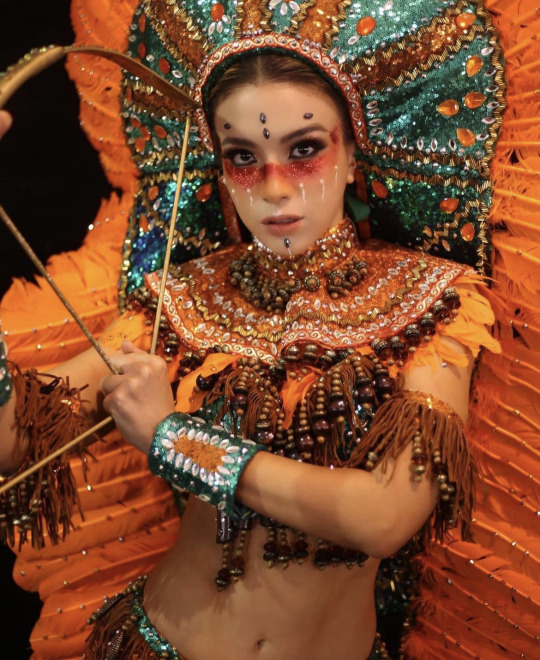


Miss Grand El Salvador 2023 National Costume
"Indio Atlacat" El Salvador National Costume is inspired by Atlacat who led the indigenous people into battles with his bow and arrow against the Spanish invasion by Pedro de Alvarado. The name comes from Atakat from the Nahuat language and means "Human being of water." To this day, his heroism remains alive in the oral tradition.
177 notes
·
View notes
Photo

Pedro de Alvarado
Pedro de Alvarado (c. 1485-1541) was a Spanish conquistador who became the first governor of Guatemala in 1527. Living an extraordinary life of adventure, Alvarado participated in separate expeditions to Mexico, Central America, South America, and finally, North America. He is best known today for leading the conquistadors who defeated the Quiché and Cakchiquel Maya.
Alvarado was Hernán Cortés' second-in-command during the conquest of the Aztec Empire in Mexico in 1520. He then moved on to attack Guatemala and other parts of Central America before launching an expedition to Ecuador. Still fighting indigenous peoples into his 50s, Alvarado died in Mexico in 1541, having gained a life-long reputation for being one of the most ruthless and cruellest of all conquistadors, a highly competitive field for such a dishonour.
Early Life
Pedro de Alvarado y Mesía was born around 1485 in Badajoz, Spain. Alvarado first came to prominence when he voyaged to Spain's first colony in the Americas, Hispaniola (modern Dominican Republic/Haiti) in the Caribbean in 1510. In 1518, he was part of the expedition sent by Diego Velázquez de Cuéllar (1465-1524), the Governor of Cuba, to explore the Yucatán Peninsula. The group of conquistadors ('conquerors') was led by Juan de Grijalva (1489-1527), who Alvaredo did not get on with and whom he denounced to Velázquez.
Alvarado is given the following physical description by the celebrated Spanish chronicler Bernal Diáz (b. 1492) in his The Conquest of New Spain:
In every sense beautifully proportioned in body, noble in his gait…very pleasing features, and an amiable manner of expressing himself, so that there always appeared a smile on his countenance.
(Sheppard, 23)
In contrast to his pleasant physique, historians have been queueing up ever since to describe Alvarado's approach to conquest in far less flattering terms. The historian S. Sheppard gives a typical description of Alvarado as "impetuous, cruel, and utterly amoral" (ibid). Even his own men, largely ruthless cutthroats themselves, denounced Alvarado for his brutality.
Continue reading...
19 notes
·
View notes
Text
The Quetzal: The Sacred Bird of Mesoamerica (and also a Symbol of Freedom)
The quetzal is a bird native to southern Mexico, Guatemala, Honduras, Nicaragua, Costa Rica and Panama. One particular subspecies of quetzal is known as the resplendent quetzal (Pharomacrus mocinno). It is larger than other subspecies of quetzals and is only found in the highly-elevated rainforests of Central America, known as cloud forests or montane rainforests. Moss covers the trunks of many of the trees in the cloud forests. There are many fruit-bearing trees that produce wild avocados, a staple of the quetzal’s diet.

Quetzals have iridescent bluish-green feathers on most of their body and red breast feathers. The shiny, green feathers help quetzals blend in with the leaves of trees in the rainforest. The species exhibits a striking example of sexual dimorphism, which is a difference between the appearance of males and females in a species. Female quetzals have grey breast feathers and short tail feathers. Their colours are less vibrant. They also do not have a crest, or a crown of feathers, on their heads like males do. Finally, male quetzals have bright, yellow beaks while females have black ones. Quetzals are most famous for the long, streamer-like tail feathers of the male quetzals. These can grow to be a metre long, more than twice the length of the bird’s body.

These beautiful tail feathers have long captured the artistic imagination of the cultures of Mesoamerica, who collected them to make headdresses for their rulers. Quetzals were revered as sacred. They appeared in the art and mythology of the Mayans and Aztecs. They became an important cultural symbol for all the people of Mesoamerica, both past and present.
To Mesoamerican cultures, the quetzal is associated with gods and rulers. Its feathers are valued more than gold. But the most important thing the quetzal represents is freedom and the continuity of Mesoamerican cultures. The bird dies in captivity. The Mayans and Aztecs knew this and never attempted to domesticate the bird, believing that it would rather attempt to kill itself than live confined. Modern zoologists have attempted to keep quetzals in captivity to breed them. Though it may be able to survive for a while and even reproduce, the quetzal shows poor mental and physical health in captivity. They are a shell of what they once were when they are confined. To the K’iche’ Maya of Guatemala, the quetzal is a symbol of their identity and their struggles to be free from their Spanish colonial oppressors. One of the most famous historical figures of the K’iche’ was Tecun Uman, their last ruler. He died in battle against the Spaniards in 1524. His spirit guide was a quetzal. The story of Tecun Uman firmly establishes the quetzal as a beloved cultural symbol for the K’iche’ and a symbol of freedom.
Tecun Uman fought bravely against the Spaniards, who were led by the conquistador Pedro de Alvarado. The town where the battle took place is now known as Quetzaltenango in Guatemala. Pedro de Alvarado was aided by Hernan Cortes, the conquistador who defeated the Aztec empire. It is difficult for historians to separate the legendary and historical elements of this story. Though Tecun Uman and the conquistadors were real people, the lore surrounding Tecun Uman’s quetzal seems more legendary. The faithful quetzal is said to have accompanied Tecun Uman in battle and flown alongside him when he charged against the Spaniards. Pedro de Alvarado killed Tecun Uman with a spear through his chest. When the K’iche’ ruler lay dying, the quetzal was so filled with grief that it landed on Tecun Uman’s chest, staining its feathers red with blood. This Mayan story is also used to explain how the quetzal got its red breast feathers. The quetzal was a spirit guide, so its life force was connected to Tecun Uman and died shortly after he died. Tecun Uman is now considered Guatemala’s national hero. He is honoured every year on February 20th. In the town of Quetzaltenango, there is a statue of Tecun Uman. He is also featured on stamps, coins and bank notes.
The Maya people in Central America today still consider the quetzal to be one of their most important symbols. The unit of currency in Guatemala is called a quetzal, alluding to how quetzal feathers were traded as currency by the Aztecs and ancient Mayans. The flag of Guatemala has a quetzal on it. Though the Aztec empire was doomed when Spanish conquistadors arrived in 1519, the Maya were more difficult to conquer. One Maya kingdom, Itza, and its capital city of Nojpetén, did not fall until 1697. Even under Spanish rule, the various Maya peoples of the region fought to preserve their culture and traditions. Just like the quetzal, they could not be subjugated for long and they had to be free. The quetzal is not just a beautiful bird to them, it’s a symbol of their freedom.

175 notes
·
View notes
Photo






@everythingdaily’s love event
Melis`s top 3 favorite couples:
Black Sails - Woodes Rogers & Eleanor Guthrie
James Bond movies - James Bond & Madeleine Swann
Hernán - Pedro de Alvarado & Tecuelhuetzin
#hernán#black sails#no time to die#spectre#007#jamesbondedit#blacksailsedit#hernanedit#james bond#madeleine swann#eleanor guthrie#woodes rogers#mabel cadena#perioddramaedit#perioddramasource#cinematv#otpsource#userperioddrama#mine*#by melis
78 notes
·
View notes
Text
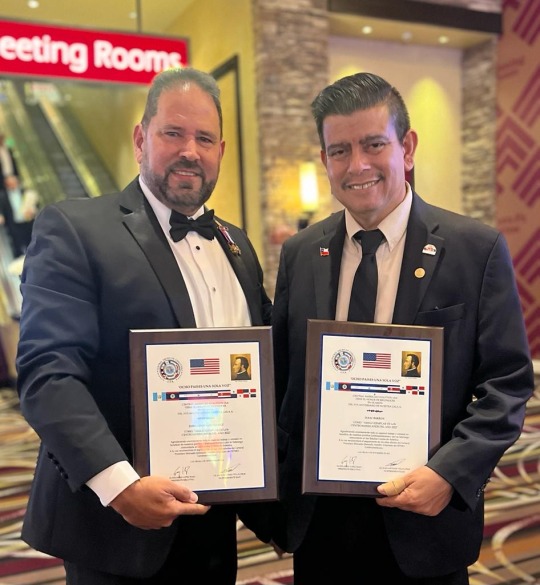




EN LAS VEGAS SE CELEBRO XVII CENA DE GALA Y RECONOCEN AL EMBAJADOR LUIS SUÁREZ
El tema de la Gala XVII fue que USA Central American Coalition tuvo el honor de reconocer la labor de Lideres, Empresarios, Diplomáticos, Políticos y Amigos, que han distinguido por su ayuda y trabajo en favor de nuestra comunidad alrededor del mundo.
La Gala fue dedicada a la integración de los países Centroamericanos y a la visión de nuestro Unionista el General Francisco Morazán.
Los maestros de ceremonia; Rosario Grajales y Luis Aceves; los puntos claves fue La Unión de Centroamérica, El sistema financiero centroamericano y nuestra diáspora.
Los invitados especiales fueron Dr. Félix Ulloa - Vicepresidente de la Republica de El Salvador, Milena Mayorga - Embajadora en Washington DC para El Salvador, Lidia Cindy Portal - Viceministra de Relaciones Exteriores de El Salvador y Francisco A. Lima Mena - Secretario General de SIECA.
Fueron reconocidos como tales los cónsules de diferentes partes como el consul generales en Las Vegas, Silvia Martínez Romero; Long Island, New York, Federico Guerrero; Silver Spring, Pedro Rodríguez; New Jersey, Ariel Valle; y en Manhattan, Daniel Erazo; igualmente también fueron reconocidos el Consejal de Las Vegas Isaac E. Baron, Embajador Dr. Luis Suarez - Embajador Cultural de Machupicchu / Embajador Ambiental de Las Islas Galápagos, Dayamy Rodriguez - Directora Ejecutiva / Fundadora de Suarez Museum of Natural Science & History, Geremias Alvarado - Empresario, Guillermo Guerra - Artista, Jose Domínguez- Director de Operaciones de la Central American Coalition USA, Javier y Nick Maldonado - CEO de Toro Taxes entre otros.
El acto también estuvo presidido por el Dr. Felix Ulloa vicepresidente de la República de El Salvador, Milena Mayorga embajadora de El Salvador en Estados Unidos y Aner Iglesias cónsul honorario en Nevada. También participó el presidente del Central American Coalition USA, Eduardo López Rajo; CEO de USA Aliance Financial, Kristi Vanbeek; entre otros invitados especiales.
Durante el evento el Presidente Nayib Bukele mandó un audio dandole un cordia saludo y agradecimiento a todos los presentes en el evento de Las Vegas 2022.
El Embajador Suárez durante su Intervención comenzó dando le las gracias al Dr. Eduardo López Rajo por la honorable cordial invitación y despues se dirigió a agradecerle al Lic. Eduardo Umaña - Consul General de El Salvador por aver confiado en el representándolo y recato el trabajo humanitario que venían asiendo en conjunto en el consulado general de El Salvador en Miami y sobre todo durante la pandemia al igual que agradeció a la Embajadora Milena Mayorga por su atención del recibimiento en El Salvador durante su visita y por supuesto no podía faltar en mencionar el gran trabajo que estaba asiendo el Presidente Nayib Bukele y una vez más invitó a aquellos que no hayan conocido a El Salvador que deberían visitarlo para que se encanten tal como se encantó el con sus Volcanes y sus Pupusas. El Embajador Suárez termino su diálogo exclamando Viva El Salvador, Viva El Salvador y Viva El Salvador.
Embajador Dr. Luis Suárez Cubano / American de Miami fue reconocido con el Premio ’ OCHO PAÍSES Y UNA SOLA VOZ ’ como ’ AMIGO EJEMPLAR DE LOS CENTROAMERICANOS DEl AÑO 2022 ’ Agradeciendo enormemente todo su especial trabajo y amistad en beneficio de nuestros pueblos Centroamericanos y por su liderazgo comunitario en los Estados Unidos de America. A la vez reconocemos el seguimiento de los altos idéales del General Francisco Morazán Quezada, nuestro Unionista del ISTMO Centroamericano. Las Vegas, 4 de Noviembre de 2022.
Entregado por Dr. Eduardo López Rajo - Presidente Ejecutivo y Lic. Juan Antonio Villalobos - Vicepresidente del Centro American Coalition USA. #Elsalvador #Noticias #Entretenimiento
#noticias periodico prensa medio#medio#noticias periodico prensa#live#tv#comunicacion#noticias#las noticias#youtube#comunicado#covid-19#univicion#facebook#periodico prensa#instagram#noticia#nayibbukele#salud#cultura#programa
2 notes
·
View notes
Text
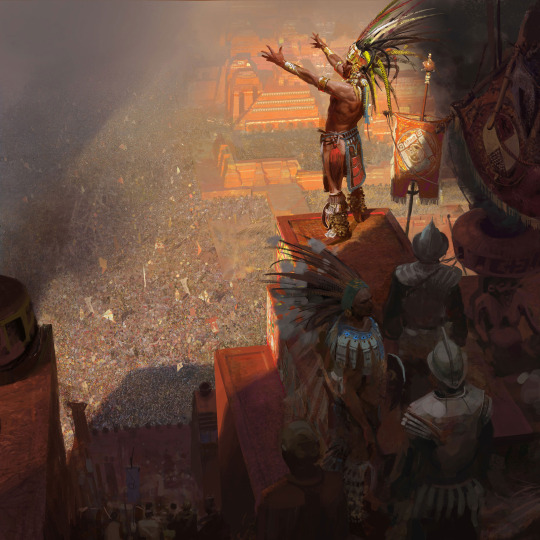

#conquistadors#craig mullins#aztec empire#spanish empire#conquistador#aztec#aztecs#moctezuma#hernán cortés#spain#spanish#mexico#templo mayor#temple#pyramid#mexica#huitzilopochtli#tenochtitlán#age of discovery#age of exploration#european#pedro de alvarado#mesoamerica#age of empires#cuitláhuac#bernal díaz del castillo#new world#americas#gonzalo de sandoval#cristóbal de olid
84 notes
·
View notes
Text
mucho más » semana DLXXXVIII (30E)
Un nuevo domingo aprovechamos nuestra cita para repasar una a una todas las infografías que se han publicado esta semana en la prensa nacional e internacional. ¡Es hora del «Mucho más»! Arrancamos el resumen, como siempre, tras el salto:

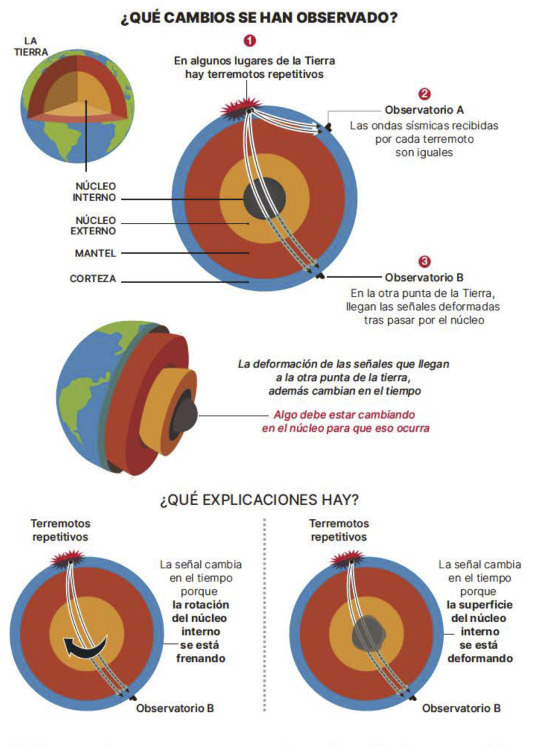
Trabajo: El frenazo del núcleo de la Tierra | Medio: El Periódico, del 30 de enero

Trabajo: Djokovic alcanza su 22º Grand Slam | Medio: La Voz de Galicia, del 30 de enero | Alta resolución »
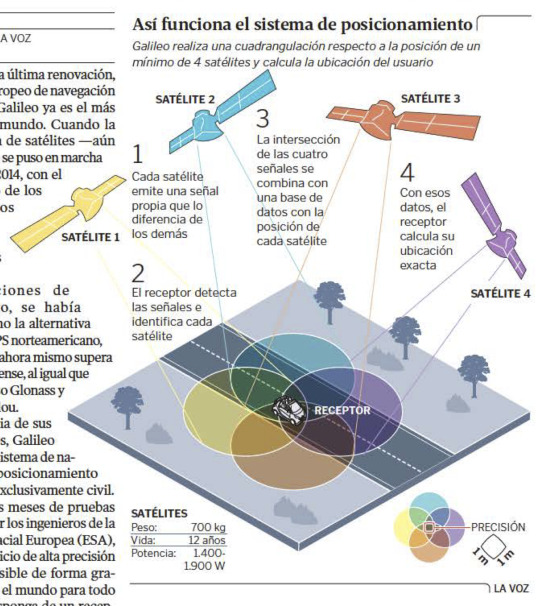
Trabajo: Funcionamiento del sistema de posicionamiento del satélite Galileo | Medio: La Voz de Galicia, del 31 de enero

Trabajo: Ofensiva rusa en el frente | Autor: Javier Aguirre | Medio: El Mundo, del 1 de febrero
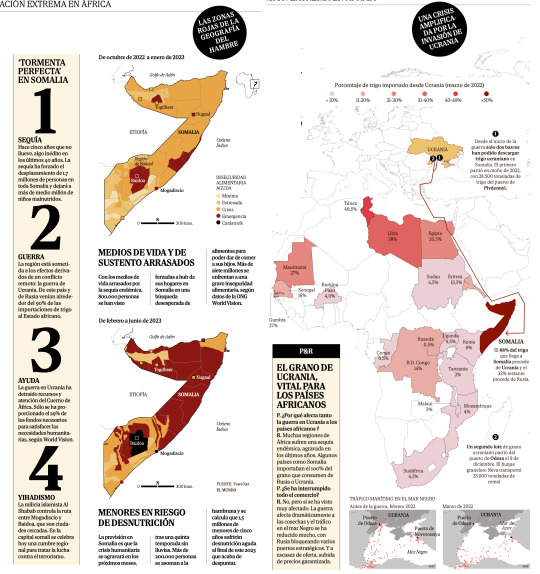
Trabajo: Las zonas rojas de la geografía del hambre: una crisis amplificada por la invasión rusa de Ucrania | Medio: El Mundo, del 1 de febrero

Trabajo: Armando a Ucrania para la guerra | Autor: Ian Bott | Medio: Financial Times, del 1 de febrero | Alta resolución »

Trabajo: En busca de mayor autonomía para los pacientes ELA | Autor: Emilio Amade | Medio: El Mundo, del 2 de febrero | Alta resolución »
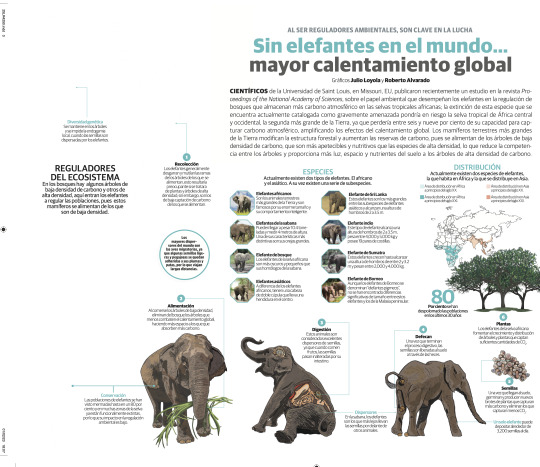
Trabajo: Sin elefantes en el mundo, mayor calentamiento global | Autores: Julio Loyola y Roberto Alvarado | Medio: La Razón (México), del 2 de febrero | Alta resolución »

Trabajo: Un bisturí capaz de detectar un cáncer en tiempo real | Autora: Victoria Denys | Medio: Le Monde, del 2 de febrero | Alta resolución »

Trabajo: ¿Puede un roedor predecir el tiempo mejor que un meteorólogo? (Pista: no) | Autora: Janet Loehrke | Medio: USA Today, del 2 de febrero | Alta resolución »

Trabajo: Cómo las aves transmiten la gripe aviar a las personas | Medio: ABC, del 4 de febrero | Alta resolución »
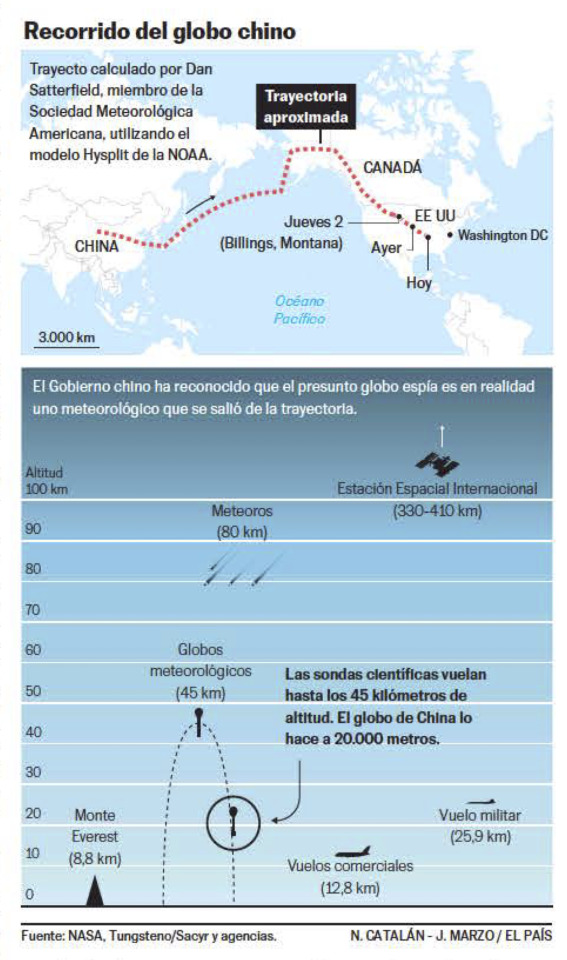
Trabajo: Recorrido del globo espía chino | Autores: N. Catalán y J. Marzo | Medio: El País, del 4 de febrero
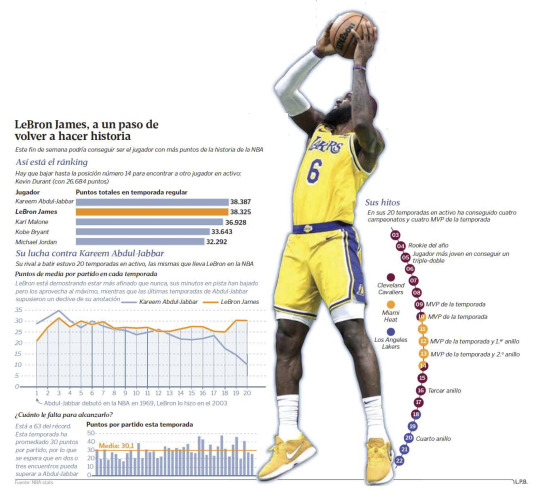
Trabajo: LeBron James, a un paso de volver a hacer historia | Autora: Laura Placer | Medio: La Voz de Galicia, del 4 de febrero | Alta resolución »

Trabajo: Previa del VI Naciones 2023 | Medio: Marca, del 4 de febrero | Alta resolución »

Trabajo: El viaje del globo espía chino | Autores: Dylan Moriarty y William Neff | Medio: The Washington Post, del 4 de febrero | Alta resolución »

Trabajo: El agresivo cáncer ocular | Medio: A tu salud (La Razón) #949, del 5 de febrero
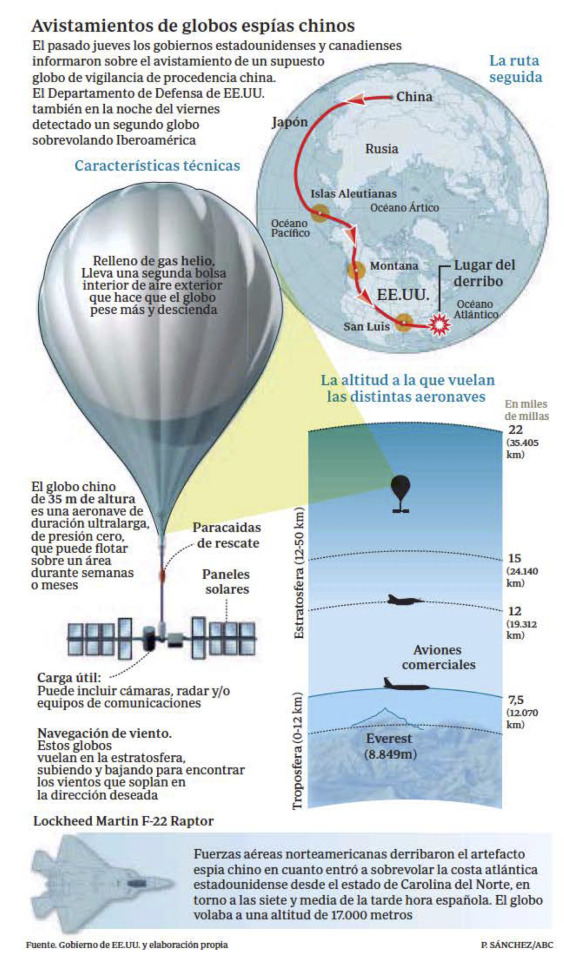
Trabajo: Avistamientos de globos espías chinos | Autor: Pedro Sánchez | Medio: ABC, del 5 de febrero

Trabajo: El viaje de las células tumorales en la metástasis | Medio: La Voz de Galicia, del 5 de febrero
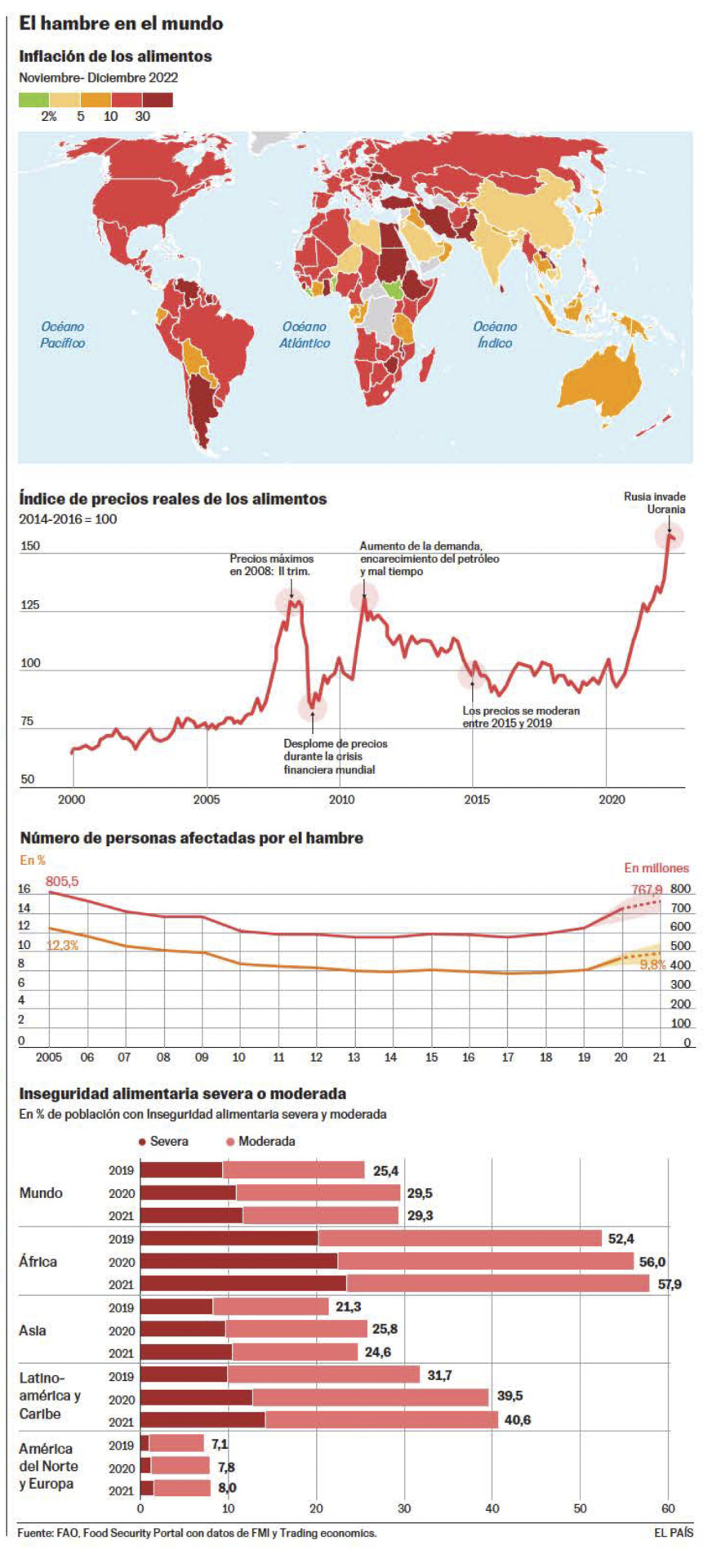
Trabajo: Radiografía del hambre en el mundo | Medio: Negocios (El País) #1.944, del 5 de febrero
__________________
inconsolata te ofrece la oportunidad de analizar en profundidad cualquier gráfico de la página. Si quieres ver u obtener alguna de estas infografías en mayor calidad, no dudes en ponerte en contacto con nosotros. También nos puedes encontrar en nuestra cuenta de Twitter.
© 2023
#muchomás#infografía#actualidad#el periódico#la voz de galicia#deportes#el mundo#cartografía#conflicto rusia ucrania#financial times#la razón (mex)#le monde#USA Today#ABC#El País#marca#the washington post#la razón#medios internacionales
1 note
·
View note
Text


La Noche Triste
Event during the Conquest of Mexico
La Noche Triste ("The Night of Sorrows", literally "The Sad Night") was an important event during the Spanish conquest of the Aztec Empire, wherein Hernán Cortés, his army of Spanish conquistadors, and their native allies were driven out of the Aztec capital, Tenochtitlan.
Quick Facts Date, Location ...
Prologue
Cortés' expedition arrived at Tenochtitlan on November 8, 1519, taking up residence in a specially designated compound in the city. Soon thereafter, suspecting treachery on the part of their hosts, the Spaniards took Moctezuma II, the Aztec king or Tlatoani, hostage. Though Moctezuma followed Cortés' instructions in continually assuring his subjects that he had been ordered by the gods to move in with the Spaniards and that he had done so willingly, the Aztecs suspected otherwise. During the following 98 days, Cortés and his native allies, the Tlaxcaltecs, were increasingly unwelcome guests in the capital.
Cortés heads off Spanish punitive expedition
In June 1520, news from the Gulf coast reached Cortés that a much larger party of Spaniards had been sent by Governor Velázquez of Cuba to arrest Cortés for insubordination. Leaving Tenochtitlan in the care of his trusted lieutenant, Pedro de Alvarado, Cortés marched to the coast, where he defeated the Cuban expedition led by Pánfilo de Narváez sent to capture him. When Cortés told the defeated soldiers about the riches of Tenochtitlan, they agreed to join him. Reinforced by Narvaez's men, Cortés headed back to Tenochtitlan.
Loss of control in Tenochtitlan
During Cortés's absence, Pedro de Alvarado ordered a preemptive slaughter of Aztec nobles and priests celebrating a festival in the city's main temple. In retaliation, the Aztecs laid siege to the Spanish compound, in which Moctezuma was still being held captive. By the time Cortés returned to Tenochtitlan in late June, the Aztecs had elected a new Tlatoani named Cuitláhuac.
Cortés ordered Moctezuma to address his people from a terrace in order to persuade them to stop fighting and to allow the Spaniards to leave the city in peace. The Aztecs, however, jeered at Moctezuma, and pelted him with stones and darts. By Spanish accounts, he was killed in this assault by the Aztecs, though the Aztecs claim he had been killed instead by the Spanish.: 294 : 90
A map of Tenochtitlan and its causeways leading out of the capital
With Moctezuma dead, Cortés and Alvarado knew they were in a precarious position. Under constant attack, with gunpowder, food, and water in short supply, Cortés decided to break out of the city by night. In order to put the Aztecs off their guard, he sent messengers asking for a one-week ceasefire, at the end of which the Spaniards would return any treasure of which they were in possession and would be permitted to leave the city peacefully.: 296
Since the Aztecs had damaged bridges on four of the eight causeways into the island city, the Spaniards devised a portable bridge they could use in order to cross any unspanned sections of water. Cortés ordered that as much of the accumulated gold and other booty as was feasible be packed and carried away, and invited the Spanish soldiers to take and carry away as much as they wished of the remainder. This invitation would lead to the demise of many soldiers who, overburdened with treasure, found it impossible to navigate the causeways and other obstacles encountered on the way out of the city.: 297, 306
Cortés ultimately would have to choose among three land routes: north to Tlatelolco, which was the least dangerous path but required the longest trip through the city; south to Coyohuacan and Iztapalapa, two towns that would not welcome the Spanish; or west to Tlacopan, which required the shortest trip through Tenochtitlan, though they would not be welcome there either. Cortés selected the western causeway to Tlacopan, needing the quickest route out of Tenochtitlan with all his provisions and people.
The Spanish head for the causeway out
On the night of July 1, 1520, Cortez's large army left their compound and headed west, toward the Tlacopan causeway. The causeway was apparently unguarded, and the Spaniards made their way out of their complex unnoticed, winding their way through the sleeping city under the cover of a rainstorm. Before reaching the causeway, they were noticed by Aztec warriors known as the Eagle Warriors, who sounded the alarm.: 298, 305 [discuss] The alarm was then shouted by others, first by a woman drawing water, and then by the priest of Huītzilōpōchtli from atop Templo Mayor.: 85
As the alarm spread, numerous Aztec warriors, noblemen and commoners alike, emerged from their houses and began attacking the Spaniards at every direction from their canoes or on the causeway with macuahuitl swords, spears, arrows, and stones thrown from slings. The fighting was ferocious. As the Spaniards and their native allies reached the causeway, hundreds of canoes appeared in the waters alongside to harry them. The Spaniards fought their way across the causeway in the rain. Weighed down by gold and equipment, some of the soldiers lost their footing, fell into the lake, and drowned. Amid a vanguard of horsemen, Cortés pressed ahead and reached dry land at Tacuba, leaving the rest of the expedition to fend for itself in the treacherous crossing.: 299–300
Seeing the wounded survivors straggle into the village, Cortés and his horsemen turned back to the causeway, where they encountered Pedro de Alvarado, unhorsed and badly wounded, in the company of a handful of Spaniards and Tlaxcaltecs. According to Bernal Díaz del Castillo, it was at this point that tears came to Cortés' eyes, as he realized the extent of the debacle.: 300
Cortés, Alvarado and the strongest and most skilled of the men had managed to fight their way out of Tenochtitlan, although they were all bloodied and exhausted. Cortés himself had been injured in the fighting. All of the artillery had been lost, as had most of the horses.: 302
The sources are not in agreement as to the total number of casualties suffered by the expedition. Cortés himself claimed that 154 Spaniards were lost along with over 2,000 native allies. Thoan Cano, another eyewitness to the event, said that 1170 Spaniards died, but this number probably exceeds the total number of Spaniards who took part in the expedition. Francisco López de Gómara, who was not himself an eyewitness, estimated that 450 Spaniards and 4,000 allies died.
Montezuma's son, Chimalpopoca was killed; Tepanec prince Tlaltecatzin,: 87 King Cacamatzin, his three sisters and two brothers were also killed.: 90
Diaz states the Spaniards suffered 860 soldiers killed, which included those from the later Battle of Otumba. The Tlaxcaltecs lost a thousand. The noncombatants attached to the expedition suffered terribly, 72 casualties, including five Spanish women. The few women who survived included La Malinche the interpreter, Doña Luisa, and María Estrada.: 302, 305–306 The event was named La Noche Triste ("The Night of Sorrows") on account of the sorrow that Cortés and his surviving followers felt and expressed at the loss of life and treasure incurred in the escape from Tenochtitlan.
Aftermath
Further battles awaited the Spaniards and their allies as they fought their way around the north end of Lake Zumpango. One week later, at the Battle of Otumba, not far from Teotihuacan, they turned to fight the pursuing Aztecs, decisively defeating them — according to Cortés, because he slew the Aztec commander — and giving the Spaniards a small respite that allowed them to reach Tlaxcala.: 303–305
It was in Tlaxcala that Cortés planned the siege of Tenochtitlan and the eventual destruction of the Aztec Empire.
5 notes
·
View notes
Photo

Pedro de Alvarado
Pedro de Alvarado (c. 1485-1541) était un conquistador espagnol qui devint le premier gouverneur du Guatemala en 1527. Il mena une vie d'aventure extraordinaire et participa à plusieurs expéditions au Mexique, en Amérique centrale, en Amérique du Sud et enfin en Amérique du Nord. Il est surtout connu aujourd'hui pour avoir été à la tête des conquistadors qui triomphèrent des Mayas Quiché et Cakchiquel.
Lire la suite...
2 notes
·
View notes
Text
The Only Country Named After Jesus – Can You Guess Which?
There are 195 countries today: 193 member states of the United Nations and 2 observer states, the Holy See & Palestine.
Of that 195, only one country is named after Jesus Christ – can you guess which?
El Salvador.
The story of El Salvador begins with Spanish Conquistador Pedro de Alvarado. On the 6th of June in 1524, he and some 5,500 soldiers crossed the Paz River into what is today the Ahuachapán Department to find it abandoned.
He declared the new territory for New Spain as such: Provincia De Nuestro Señor Jesus Cristo, El Salvador Del Mundo meaning Province of our Lord Jesus Christ, the Saviour of the World. The name was subsequently shortened to what we see today.
El Salvador also holds another first: they have the only nation capital named after Jesus also!
Alvarado also founded the the Villa de San Salvado shortly before May of 1525, becoming today the country’s capital city of San Salvador meaning Holy Savior. His nephew also happened to found the country’s 3rd most populous city, San Miguel meaning Saint Michael.
The rich Catholic history of El Salvador is evident today: a majority of the country today are practicing Roman Catholics.
0 notes
Text



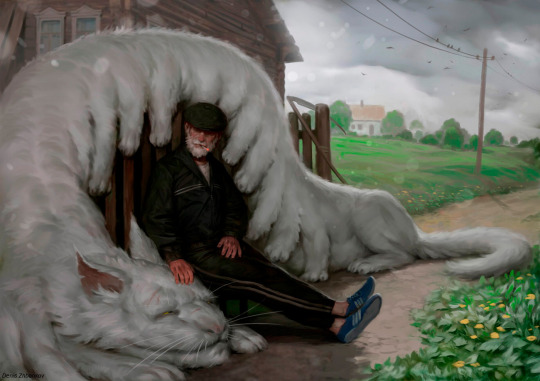
IMAGENES Y DATOS INTERESANTES DEL DIA 1 DE ABRIL DE 2024
Lunes de Pascua, Día Internacional de las Bromas, Día Internacional de la Diversión en el Trabajo, Año Internacional de los Camélidos.
San Venancio.
Tal día como hoy en el año Tal día como hoy en el año 2001
En el mar del Sur de China, un avión de reconocimiento naval de EEUU, modelo EP-3, colisiona en el aire con uno de los dos cazas chinos F-8 que tratan de expulsarle del área cercana a unas maniobras militares. El caza averiado se estrella en aguas internacionales, causando la muerte de su piloto, y el EP-3 averiado con 24 tripulantes, aterriza en la isla china de Hainan, donde su tripulación será detenida durante 11 días, desatando el primer conflicto diplomático de gravedad entre China y EE.UU. desde la llegada de George W. Bush a la Casa Blanca. (Hace 23 años)
1979
Se celebran en España las primeras elecciones municipales libres después de la Guerra Civil ganada por Francisco Franco, que exactamente hoy hace 40 años que concluyó, en 1939. Los votantes dan el triunfo a la izquierda en una gran mayoría de ciudades. (Hace 45 años)
1976
Steve Jobs, Steve Wozniak y Ronald Wayne fundan Apple, empresa multinacional estadounidense con sede en California, diseñadora y fabricante de equipos electrónicos y de software. (Hace 48 años)
1939
Oficialmente concluye la cruenta y dolorosa Guerra Civil Española con el parte firmado por el general Franco, convertido ya en dictador, que dice así: "Parte Oficial de guerra correspondiente al 1º de Abril de 1939, III Año Triunfal. En el día de hoy, cautivo y desarmado el Ejército rojo, han alcanzado las tropas Nacionales sus últimos objetivos militares. LA GUERRA HA TERMINADO. Burgos, 1º de Abril de 1939. Año de la Victoria. EL GENERALÍSIMO: Franco" (sic). (Hace 85 años)
1933
En Alemania y debido a la ideología política racista del III Reich, se produce el "día del boicot", dirigido contra comerciantes, profesores, estudiantes, abogados y médicos judíos. (Hace 91 años)
1918
En el Reino Unido se funda la Royal Air Force, más conocida por sus siglas RAF, con soldados del Cuerpo Aéreo Real Británico y del Servicio Naval (Royal Naval Air Service), con el fin de contrarrestar a la fuerza aérea alemana durante la I Guerra Mundial en la que Inglaterra sufre una larga serie de ataques de bombardeo, con la frustración del servicio aéreo británico por su manifiesta inferioridad ante los alemanes. Esta orden de crear la RAF se mostrará efectiva al final de la guerra, pues la aviación británica habrá ganado gran superioridad en el frente occidental. (Hace 106 años)
1833
En México, el general Antonio López de Santa Annase convierte en presidente. Configurará un estado centralista, apoyándose en el ejército y en los conservadores. (Hace 191 años)
1528
Tres años después de que Gonzalo de Alvarado, siguiendo órdenes de su hermano Pedro fundara El Salvador, capital de la actual República que lleva su nombre, y la tuviera que abandonar en 1526 debido a una sublevación de los pueblos indígenas, en el día de hoy, expedicionarios españoles e indígenas de origen tlaxcalteca y mexica, al mando del conquistador Diego de Alvarado, apaciguan los ánimos caldeados de los indígenas salvadoreños que viven en lo que actualmente se conoce como "Ciudad Vieja" al sur de Suchitoto, y refundan la ciudad. (Hace 496 años)
1525
En el actual El Salvador, Gonzalo de Alvarado funda la villa San Salvador. Un año después, los cuzcatlecos sublevados atacarán e incendiarán la naciente villa. (Hace 499 años)
286
Apremiado por necesidades militares, para hacer frente a la revuelta carusiana en el Imperio, el emperador Diocleciano eleva a su general Maximiano como co-emperador con la dignidad de augusto y le otorga el control sobre las regiones occidentales del Imperio Romano. (Hace 1738 años)
1 note
·
View note